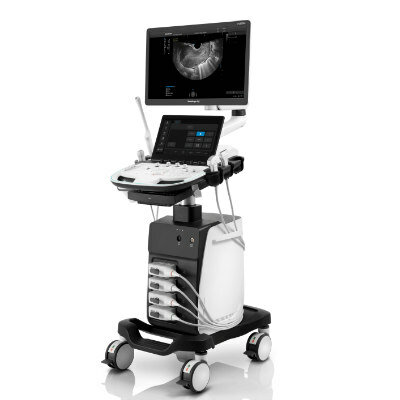Brain Tumor Destroyed While Patient Conscious
By MedImaging International staff writers
Posted on 08 Sep 2008
For the first time, brain surgeons have succeeded in destroying a brain tumor in a conscious patient using an innovative keyhole laser surgery system. Posted on 08 Sep 2008
A team of surgeons from Pitié-Salpêtrière Hospital (Paris, France) conducted surgical trials of the laser system on eight patients between 2006 and 2008. The patients were all suffering from metastasizing brain tumors caused by various cancers, mainly lung and breast cancer that had failed to respond to conventional treatment and were otherwise inoperable; their life expectancy if untreated was estimated at no more than three months. The clinical trials were overseen by the Agence Française de Sécurité Sanitaire des Produits de Santé (Afssaps), the French health security and health products agency (Saint-Denis, France).
The surgeons first drilled a minute 3-mm-wide hole into the skull, allowing the surgeon to introduce a water-cooled fiberoptic laser device, the Visualase, into the brain. The device was gently guided towards the tumor area with the help of a magnetic resonance imaging (MRI) scanner. Every three seconds, a computer workstation calculated the temperature at the area being burned by the laser to ensure that there was no dangerous overheating and to confirm that only tumor cells were being destroyed.
The patient received only a local anesthetic, remaining conscious in order to be able to speak to the medical team to help verify that cerebral functions were not being harmed. Complete treatment required two or more bouts of surgery, and so far, there have been no cases of cerebral bruising or epilepsy. Six of the eight have completed the full program; of these, five have not had a relapse--defined as a return of cancerous cells to the brain--at a nine-month monitoring point. The results of the study were published in the August 2008 issue of the journal Neurosurgery.
"This is the first time that laser technology has been used intracranially, meaning inside an enclosed skull, using MRI in real time to avoid collateral damage,” said chief surgeon Alexandre Carpentier, M.D. "This is the forerunner of future techniques in which MRI will play a core intervention role in neurosurgery.”
The new technique is based on technology supplied by the M.D. Anderson Cancer Center (Houston, TX, USA) and BioTex (Houston, TX, USA), which is developing the Visualase system used in the clinical trials. The system uses information from MRI images to measure temperature profiles in an organ during laser therapy and to provide feedback control of the laser operation based on parameters selected by the users. The system allows real-time interactive image-guided closed-loop feedback control of laser interstitial thermal therapy (ITT), and increases both the usefulness and safety of the technique.
Related Links:
M.D. Anderson Cancer Center
BioTex
Pitié-Salpêtrière Hospital













